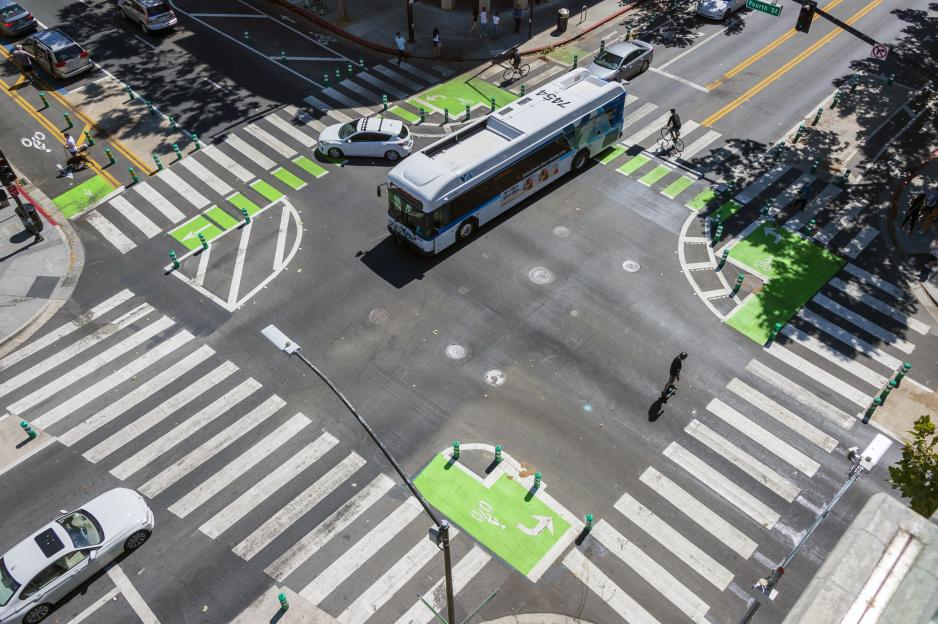Every street is a transportation link for every mode; differences are based on the balance of how each mode is prioritized. Street design should complement surrounding land uses and support walking, biking, transit use, reduced vehicle trips, and shorter trip lengths. The design of streets goes well beyond transportation function, it includes consideration for adjacent land uses and their relative transportation needs, local culture and community needs. The model street types presented here are intended to augment existing functional classifications by including consideration of public life and livability.
Rethinking Streets
Streets serve two roles in the community: transport and land use. These dual roles sometimes dictate conflicting designs. Streets should be designed to strike a balance between these roles based on distinctions in scale and using a multimodal perspective.
Streets as Places
Design streets that support local land use and respond to local context.
Connectivity
A well-connected network of streets makes it easier to walk, bike, and take transit and distributes traffic load among many streets rather than concentrating it on any one street.
Pedestrian Environment
Pedestrian-oriented places encourage walking and exploration, enlivening public spaces.
Travelway
The design of the travelway is related to the street’s vehicle traffic capacity and design speed, and needs for transit vehicles, bicyclists, and emergency vehicles.
Intersections
Intersections can be designed or redesigned to better accommodate all modes of travel.
Transit Streets
Streets that include bus or light rail transit should be designed in specific ways that are supportive of transit.
Mixed-Use Street
The high density and proximity of land uses on a mixed-use street produces substantial transit, pedestrian, and bicycle travel as well as render the street a gathering place for people and community activity.
Commercial Street
Commercial streets should emphasize convenient vehicular traffic movement and access to adjacent land properties.
Multiway Boulevard Commercial Street
Multiway boulevards are typically arterials augmented with local frontage roads on either side that are designed to promote a pedestrian-friendly atmosphere with on-street parking, curb extensions, and attractive landscaping.
Main Street
Main streets emphasize walking, bicycling, and transit within an attractive landscaped and high-amenity public space, while accommodating high traffic volumes at low speeds.
Business Park Street
The goal of business park streets is to provide comfort and safety for pedestrians, bicyclists, and transit users even though activity levels are low.
Residential Street
Residential streets tend to be more pedestrian-oriented than commercial streets, giving a higher priority to landscaped medians, planting strips, sidewalks, on-street parking, and bicycle lanes than to the number of lanes.
Shared Street | Woonerf
A shared street, or “woonerf,” refers to a design concept in which moving and parked cars share the same space as moving and lingering pedestrians and bicyclists.
Case Studies
- San Francisco, CA, USA - Octavia Boulevard, a Multiway Boulevard
- Barcelona, Spain - Superblocks
- Oakland, CA, USA - Telegraph Avenue: Complete Streets Transformation
